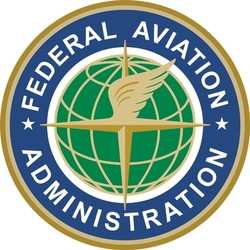Sat, Dec 01, 2012
Guidelines Developed In Conjunction With The Department Of Labor
The FAA, working with the U.S. Department of Labor’s Occupational Safety and Health Administration (OSHA), today proposed a new policy for addressing flight attendant workplace safety. While the FAA's aviation safety regulations take precedence, the agency is proposing that OSHA be able to enforce certain occupational safety and health standards currently not covered by FAA oversight.

“Safety is our highest priority and that certainly extends to those who work in the transportation industry,” said U.S. Transportation Secretary Ray LaHood. “Under this proposal, flight attendants would, for the first time, be able to report workplace injury and illness complaints to OSHA for response and investigation.”
“The policy announced today with the FAA will not only enhance the health and safety of flight attendants by connecting them directly with OSHA, but will by extension improve the flying experience of millions of airline passengers,” said U.S. Secretary of Labor Hilda L. Solis.
Flight attendant workplace issues could include things such as exposure to noise and bloodborne pathogens, and access to information on hazardous chemicals. The FAA and OSHA will continue to work to identify any additional conditions where OSHA requirements could apply. They will also develop procedures to ensure that OSHA does not apply any requirements that could affect aviation safety.

“Flight attendants contribute to the safe operation of every flight each day,” said Acting FAA Administrator Michael Huerta. “This proposed policy is an important step toward establishing procedures for resolving flight attendant workplace health and safety concerns.”
“We look forward to working with the FAA and the airlines to assure the protection of flight attendants,” said Dr. David Michaels, assistant secretary of labor for occupational safety and health.
Through the FAA Modernization and Reform Act of 2012, Congress required the FAA to develop a policy statement to outline the circumstances in which OSHA requirements could apply to crewmembers while they’re working on aircraft.
More News
He Attempted To Restart The Engine Three Times. On The Third Restart Attempt, He Noticed That Flames Were Coming Out From The Right Wing Near The Fuel Cap Analysis: The pilot repor>[...]
Make Sure You NEVER Miss A New Story From Aero-News Network Do you ever feel like you never see posts from a certain person or page on Facebook or Instagram? Here’s how you c>[...]
From 2009 (YouTube Edition): Leading Air Show Performers Give Their Best Advice for Newcomers On December 6th through December 9th, the Paris Las Vegas Hotel hosted over 1,500 air >[...]
Aero Linx: NASA ASRS ASRS captures confidential reports, analyzes the resulting aviation safety data, and disseminates vital information to the aviation community. The ASRS is an i>[...]
“For our inaugural Pylon Racing Seminar in Roswell, we were thrilled to certify 60 pilots across our six closed-course pylon race classes. Not only did this year’s PRS >[...]
 NTSB Final Report: Rutan Long-EZ
NTSB Final Report: Rutan Long-EZ ANN FAQ: Turn On Post Notifications
ANN FAQ: Turn On Post Notifications Classic Aero-TV: ICAS Perspectives - Advice for New Air Show Performers
Classic Aero-TV: ICAS Perspectives - Advice for New Air Show Performers ANN's Daily Aero-Linx (06.28.25)
ANN's Daily Aero-Linx (06.28.25) Aero-News: Quote of the Day (06.28.25)
Aero-News: Quote of the Day (06.28.25)




